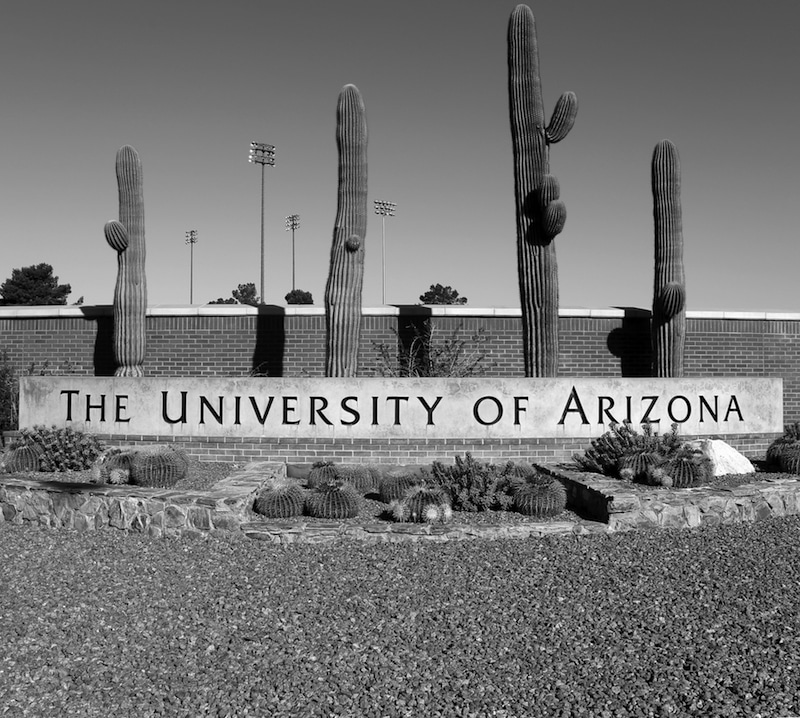The University of Arizona was looking for new tools and strategies to manage their
annual reviews online. The university was collecting information about faculty
credentials, activities, and accomplishments as part of annual reviews, but the
information on publications, mentoring, and outreach was filed away in departments.
The university needed a central, coordinated system to save faculty and administrators
time, leverage data to document the university’s impact, and avoid spending excessive
time gathering CV info for accreditation and program reviews.
Identifying the Challenges
University of Arizona’s challenges centered around two issues. First, there was no
comprehensive strategy for managing faculty data from annual reviews over all
academic units. The university had collected faculty information for annual faculty
reviews in different systems, different formats, and different locations. For example,
four colleges had independent online systems (built in-house) that collected fieldbased
data, while other colleges collected non-parsed data in the form of hardcopy
CVs. The various systems existed because solutions were compartmentalized within
the academic organizational structure instead of being organized centrally.
Second, there was no comprehensive strategy that dictated the scope of faculty
data collected. Faculty received independent data requests that focused on a single
issue at a time. Data requests lacked coordination because the university had not
comprehensively determined the faculty data needed to serve all internal and
external stakeholders.
Identifying these challenges, the university established a plan to collect faculty data
from internal and external sources in a central repository to support comprehensive
usage. Most notably, UA focused on data to support annual faculty review processes
and other performance evaluations (like promotion and tenure), as well as being
able to report on the impact of faculty contributions to business, state, and
community partners.
Getting off the Ground
The significant component to implementation was UA’s selection of Interfolio Faculty
Activity Reporting (FAR) for all faculty members to collect and report aspects of
faculty teaching, research, and service contributions. Once collected, this information
could support faculty review processes and provide a searchable database of faculty
collaborations. Key features of the system were its comprehensive scope (covering all
the faculty in the university), and central coordination by an executive sponsorship
team and an implementation team with broad representation across the institution.
Spelling Out the Benefits
Dr. Tom Miller, Vice Provost for Faculty Affairs at the University of Arizona and executive
sponsor of the project, indicated numerous benefits from the partnership. “We are working
to build a comprehensive faculty information system that is being fed by faculty
members’ annual reports,” he said. “As is inevitable in such complex projects, we faced
challenges in mapping the information and displaying it in an intuitive manner. Interfolio
has been a very responsive and innovative collaborator in addressing those challenges.”
Dr. Miller also communicated to stakeholders a clear return on investment for the
University of Arizona after implementing Interfolio, including:
- Assessments of economic and community impact: Before implementation, the university did not have a comprehensive source to document the impact of faculty service, outreach, and commercialization activities. Interfolio provides information on the work of faculty with NFPs, businesses, and schools and other federal and state agencies that is not currently available. This information provides a comprehensive accounting of the economic and social impacts of the university.
- Program reviews and strategic investments: Interfolio fills the gaps in the publication data provided through other sources, which do not fully cover the range of scholarly and creative contributions in liberal arts and fine arts disciplines. Interfolio also documents the service, economic, and community impact of units and provides a vehicle for archiving related presentations, data sets, and reports. Faculty members’ contributions can be indexed to identify them with specific geographic areas and strategic priorities to provide metrics for assessments and investments.
- Verification of teaching and institutional data: The integration of data systems through Interfolio has already made significant contributions to helping to make the attribution of courses to instructors more consistent and reliable, in part by providing a unique and consistent opportunity for faculty to review their instructional assignments, which in the case of lecture, break-out and lab courses were sometimes done in an arbitrary manner depending on local customs.
- Improved documentation on the impact of research, teaching, and engagement activities: Interfolio can be used to document how many students are supported by and contributing to research and outreach activities. When combined with information on the economic and community impact of faculty, this information provides a comprehensive accounting of the financial and institutional impact of research activities.
- Strengthened partnerships through a university-wide directory: Interfolio provides a unique and comprehensive source for faculty statements of research and teaching interests, and up-to-date information on scholarly, research, and creative contributions. It can also be used to provide other vital information that is not currently available on faculty service as directors of graduate and undergraduate programs and interdisciplinary affiliations with other departments and institutes.
- Performance metrics for assessments: By serving as a vehicle to generate and integrate data on faculty members’ service, teaching, and research activities, Interfolio provides a transparent and comprehensive means to increase accountability, not only for faculty but also for administrators. Progress on achieving identified goals for productivity can be used to guide workload assignments, coaching, and reappointments.
The University of Arizona and Interfolio continue to work together to plan for expanding use of FAR in hopes of providing additional benefits in the future.
